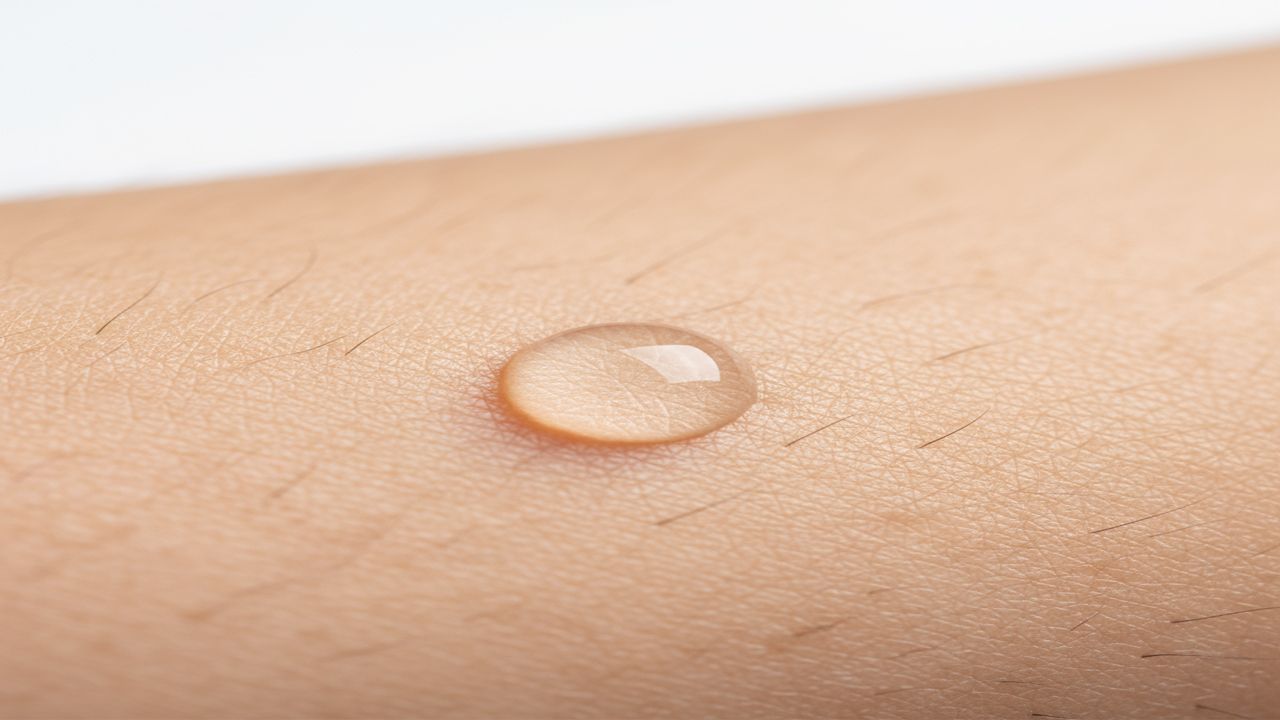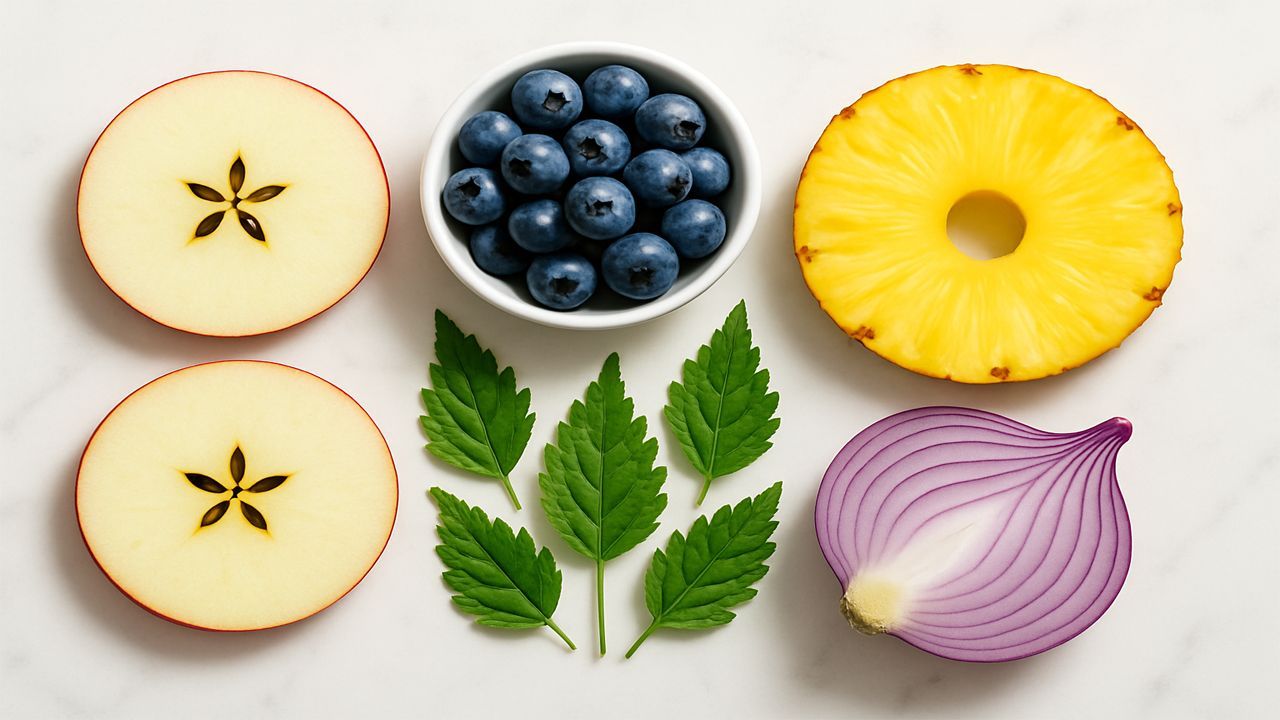
Sign up and Get 10% off on First Order

The first warm breeze of spring, the bloom of colourful flowers, or even just a thorough house cleaning—for many, these are simple joys. But for millions of others, they are triggers, signaling the start of a familiar battle: the relentless sneezing, the itchy and watery eyes, the stuffy nose, and the draining fatigue of seasonal allergies.
For decades, the go-to solution has been a trip to the pharmacy for over-the-counter antihistamines. While they can offer temporary relief, they often come with unwanted side effects like drowsiness, dry mouth, or a feeling of being disconnected. This has led a growing number of people to seek a more natural, sustainable solution—one that works with the body rather than just suppressing its symptoms.
If you are tired of your allergies dictating your life, this guide is for you. We will explore the science behind using quercetin for allergies, diving deep into how this powerful plant compound can help you reclaim your comfort and breathe easier. This is more than just a list of benefits; it's a complete roadmap to understanding and effectively utilizing one of nature’s most potent tools for allergy relief.
Before we can appreciate the solution, we must first understand the problem. An allergic reaction is essentially your body’s overzealous defense system in action. Your immune system, designed to protect you from harmful invaders like viruses and bacteria, mistakenly identifies a harmless substance—like pollen, dust mites, or pet dander—as a major threat.
This triggers a complex chain reaction, and at the heart of it are two key players: mast cells and histamine.
Think of mast cells as the sentinels of your immune system. They are stationed in tissues that are common entry points for allergens, such as your skin, nose, lungs, and gut. Inside these mast cells are tiny granules packed with powerful chemicals, the most famous of which is histamine.
When an allergen enters your body, it binds to antibodies on the surface of these mast cells. This sends a signal that the "enemy" has arrived, causing the mast cells to "degranulate"—a process where they burst open and release their chemical contents, including a flood of histamine, into your system.
This sudden histamine response is what causes the classic allergy symptoms:
Conventional antihistamines work by blocking histamine after it has already been released. Quercetin, however, takes a much more proactive and intelligent approach.
Quercetin is a natural pigment, or flavonoid, found in a wide variety of plants, fruits, and vegetables. It's what gives many foods—like red onions, apples, berries, grapes, and green tea—their vibrant colour. While it's a powerful antioxidant known for fighting free radical damage, its health benefits extend far beyond that.
In the world of natural medicine, the list of quercetin benefits is long, ranging from supporting cardiovascular health to boosting exercise performance. However, its most celebrated and well-researched role is in modulating the body's immune and inflammatory responses, making it a superstar for allergy sufferers. It is widely regarded as one of nature's most effective tools for allergy management.
So, how exactly does this plant compound stand up against a full-blown allergic reaction? Quercetin’s power lies in its multi-faceted approach. It doesn't just mask a single symptom; it addresses the root cause of the allergic cascade.
The primary reason quercetin is so effective is its ability to act as a natural antihistamine. But unlike pharmaceutical drugs that block histamine receptors, quercetin works a step earlier. Research has shown that quercetin can inhibit the release of histamine from mast cells in the first place.
Imagine your mast cell is a water balloon filled with histamine. An allergen is the pin that pops it. Quercetin essentially reinforces the balloon, making it much more resistant to popping when the allergen comes along. By preventing the release of histamine, quercetin helps stop allergy symptoms before they even have a chance to start.
This leads to its second, and perhaps most crucial, function: mast cell stabilization. This is the scientific term for the "balloon reinforcing" effect mentioned above. Quercetin strengthens the membranes of mast cells, making them less reactive and less likely to degranulate upon contact with an allergen.
This is a profoundly different approach from conventional treatments. Instead of cleaning up the mess after histamine has been released, quercetin helps prevent the mess from happening. This proactive stabilization is key to managing not just the severity but also the frequency of allergic reactions.
Allergies are fundamentally an inflammatory condition. The histamine release triggers a cascade of inflammatory mediators (like prostaglandins and leukotrienes) that contribute to swelling, redness, and discomfort.
Quercetin is a renowned anti-inflammatory agent. It works by inhibiting the production and release of these inflammatory compounds throughout the body. This dual action—blocking histamine while also reducing inflammation—means it can soothe the irritation in your nasal passages, calm your airways, and reduce the redness and swelling associated with a skin allergy.
For those whose allergies trigger asthma or other breathing difficulties, quercetin offers another layer of support. Its anti-inflammatory properties are particularly beneficial for the respiratory system. By calming inflammation in the airways, quercetin can help relax bronchial muscles, making it easier to breathe. This respiratory support is invaluable during high-pollen seasons or when exposed to other environmental triggers.

While often associated with the pollen season and hay fever, allergies frequently manifest on our largest organ: the skin. Hives (urticaria), eczema (atopic dermatitis), and general rashes are common signs of an allergic reaction, whether from food, contact with an irritant, or an internal histamine overload.
When histamine is released in the skin, it causes tiny blood vessels to leak plasma. This fluid accumulation results in raised, red, and intensely itchy welts known as hives. In conditions like eczema, a chronic inflammatory response leads to dry, cracked, and inflamed skin.
The same mechanisms that make quercetin for allergies effective for your sinuses also make it a powerful ally for your skin.
Incorporating quercetin can be a key part of a holistic approach to managing inflammatory skin conditions, providing relief from the inside out.

While quercetin is a powerhouse on its own, its true potential is often unlocked when combined with other natural compounds that enhance its effects. This is where the concept of synergy comes into play. Nature rarely provides a single magic bullet; instead, it offers a team of compounds that work together.
One of the main challenges with quercetin is its naturally low bioavailability, meaning the body has a hard time absorbing and utilizing it on its own. Pairing it with the right partners can dramatically increase its effectiveness.
Bromelain is a complex mixture of enzymes found in the pineapple plant. It's most famous for its digestive-support properties, but its benefits run much deeper.
Don't let the name fool you. While touching the fresh plant can cause a stinging rash, dried stinging nettle leaf has been used for centuries in traditional medicine as a revered herbal supplement for health. It is particularly well-known as a remedy for stinging nettle for hay fever.
When you combine Quercetin (the mast cell stabilizer), Bromelain (the absorption enhancer and anti-inflammatory), and Stinging Nettle (the histamine blocker), you get a comprehensive, multi-pronged natural formula that addresses allergy symptoms from every angle.
Simply eating more apples and onions, while healthy, won't provide a high enough concentration of quercetin to have a therapeutic effect on allergies. For meaningful relief, a high-quality supplement is necessary.
This is perhaps the most critical piece of advice: be proactive, not reactive.
Quercetin works best as a preventative measure. Its primary role is to stabilize mast cells before they are exposed to a high load of allergens. Therefore, the ideal time to start taking quercetin for allergies is about 4-6 weeks before your typical allergy season begins.
If you know that the pollen season in your area starts in March, you should begin your quercetin regimen in late January or early February. This gives the compound enough time to build up in your system and fully stabilize your mast cells.
For year-round allergies (like dust or pet dander), consistent daily use is recommended. It's generally best to take quercetin in divided doses (e.g., one capsule in the morning and one in the evening) with food to enhance absorption and minimize any potential for stomach upset.
If you are looking for a natural, science-backed way to manage your allergy symptoms, reduce your reliance on pharmaceuticals, and address the root cause of your discomfort, then quercetin for allergies is an outstanding choice.
By stabilizing mast cells, inhibiting histamine release, and calming inflammation, quercetin offers a comprehensive strategy for relief. It empowers you to move from a reactive cycle of symptom management to a proactive state of immune balance. When combined synergistically with potent partners like Bromelain and Stinging Nettle, its effectiveness is amplified, providing a robust defense against everything from seasonal pollen to year-round dust.
Don't let sneezing and itchy eyes keep you from enjoying the world around you. Embracing a natural solution like quercetin can be the first step toward clearer breathing, calmer skin, and a more comfortable life.
Ready to experience the difference? If you're looking for a high-quality, synergistic formula designed to provide comprehensive natural support for your body's response to allergies, explore a trusted supplement like Diagnose to Cure's Quercetin Plus. Take control of your allergy season today.